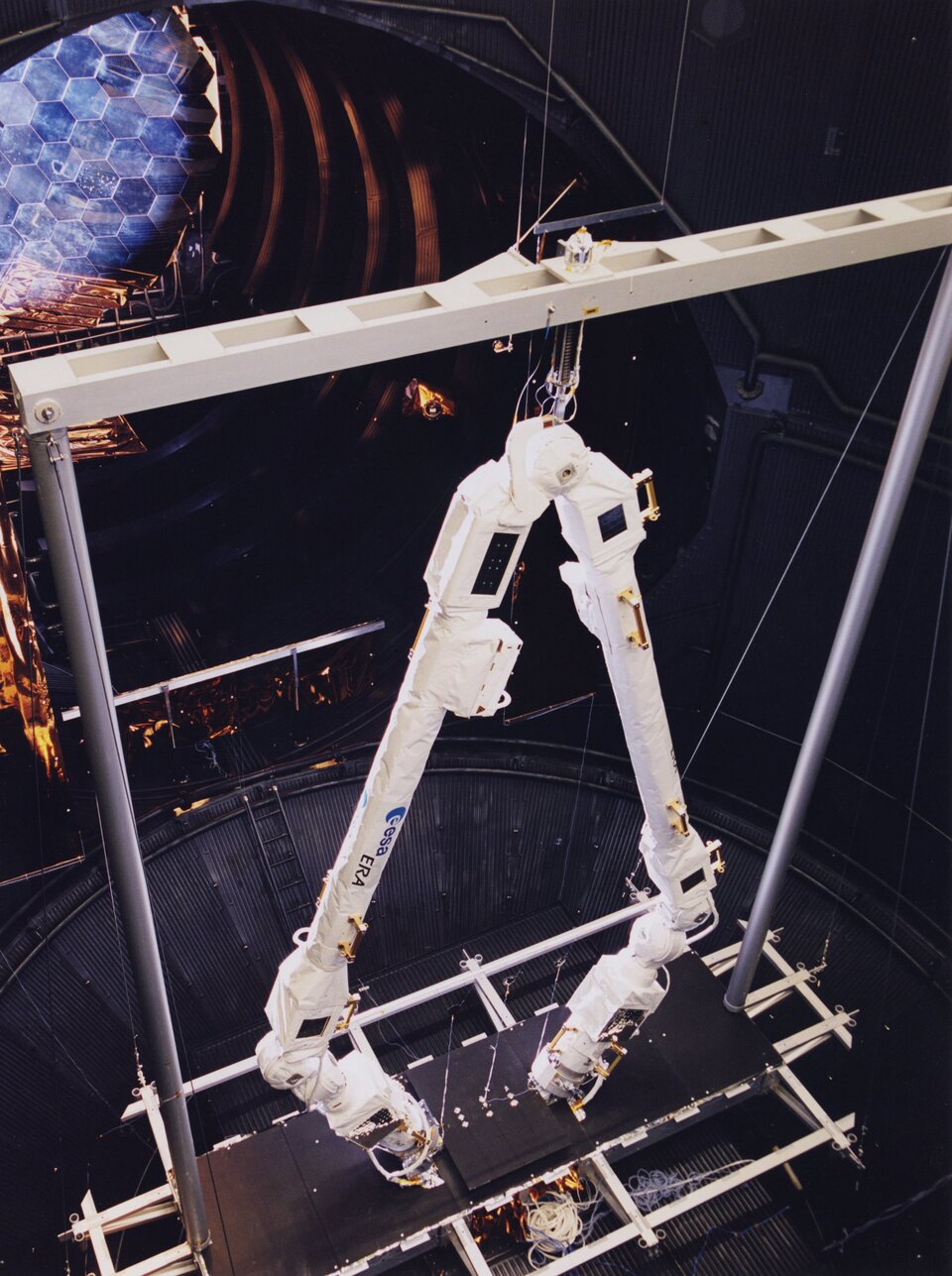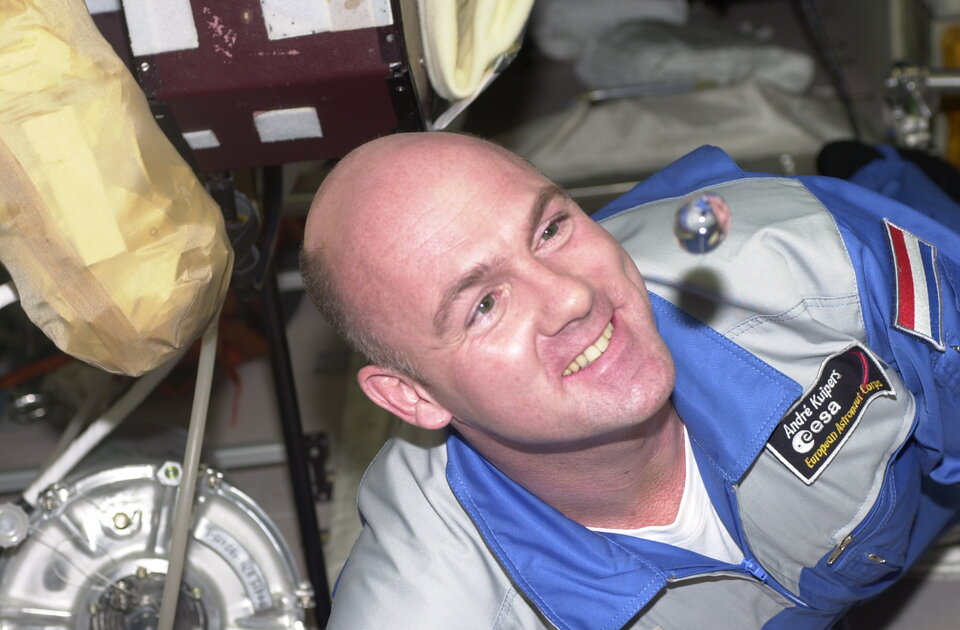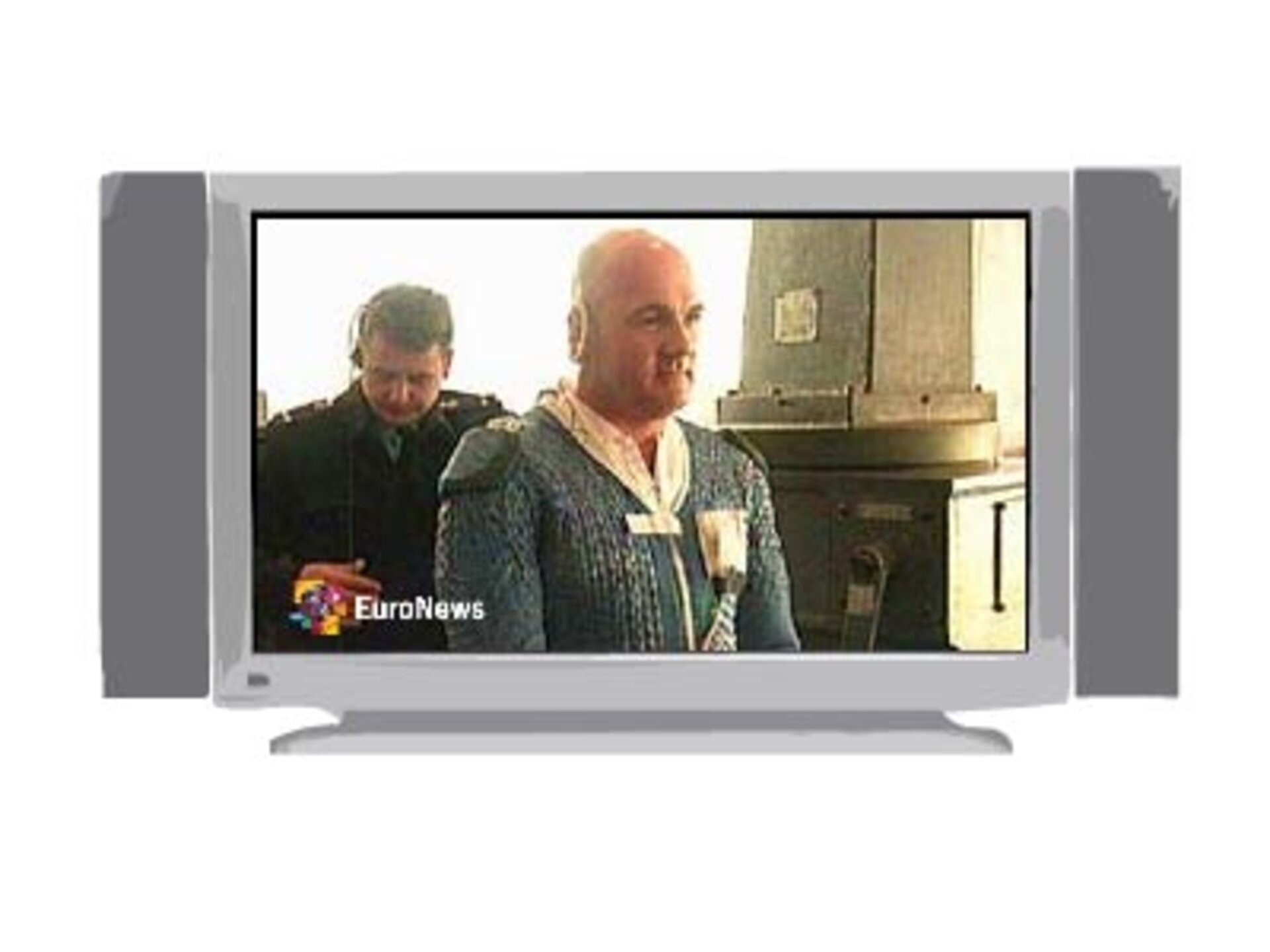Underwater trials for Europe's robotic arm
In the Hydrolab facility at the Yuri Gagarin Cosmonauts Training Centre on the outskirts of Moscow, two men prepare to don awkward looking spacesuits. Nearby, a mockup of a Russian module destined for the International Space Station and a robotic arm are at the bottom of a large pool.
EuroNews cameras follow as Dutch ESA astronaut André Kuipers and his colleague Dimitry Verba slide into the massive Orlan spacesuits which will allow them to carry out the first underwater test on the European Robotic Arm - ERA. During this trial it will be assembled in conditions of weightlessness.
"In orbit, ERA will install equipment on the outside, help carry out inspections of the modules and assist astronauts moving around during spacewalks. It is an extremely valuable part of the International Space Station, and will complement the existing Canadian Mobile Servicing System arm," explains Philippe Schoonejans, ESA's project manager for the arm which is due to be launched in 2007.

It is an impressive piece of equipment built by a consortium of 22 companies led by Dutch Space. With one elbow joint, its two limbs and wrists are symmetrical. So-called 'End-Effectors' at the limb extremities allow either end to be attached to the station. Fully deployed, ERA is over 11 m in length, weighs 630 kg and can handle loads up to 8000 kg.
Henk Petersen, from the prime contractor Dutch Space, stresses the arm's versatility. "By attaching itself by one extremity, then by the other, ERA will be able to displace itself on the outer surface of the Space Station, moving from base points on one module to the next."
Kuipers and Verba are now working below the surface. Other divers are with them to assist if required. An ESA underwater cameraman films each action. Several heavy weights to obtain the correct buoyancy and near zero-gravity conditions are attached to the Orlan suits. The task, assembling the arm under water, appears to be extremely difficult.

"If you want to move around tridimensionally, up, down and sideways, you have to fight against the buoyancy as well," explains Kuipers after the three-hour test. "It is very hard to go from one side of the arm to the other because one has to go up and down again. It should be easier in the weightlessness of space because there will be no buoyancy, less resistance."
Things the two astronauts expected to be able to do with one hand, sometimes needed two and at times they were losing their balance. The Orlan suits are comfortable but cumbersome to work in. Swimming is impossible and vision through the helmet is limited.
In the facility's control room, the Russian managers and the ESA team compare their conclusions. "This first test has provided very valuable information for the project's development," says Philippe Schoonejans. "There are certainly things we must modify, but discovering such problems was the main objective before we start training astronauts to use this arm."
ERA will greatly assist the ISS occupants in future years. It will be operated both remotely from inside the station and externally with a control box. What ever the case, astronauts will not have the leisure to admire the view, 400 km above the Earth. "I know well from colleagues that you just do not have time to look around," says Kuipers. "Whether you are in the water or in space, you just concentrate on what has to be done."
EuroNews
EuroNews is a key medium for delivering international information with a European point of view. Broadcast in 79 countries, EuroNews reaches 144 million households in Europe, the Middle East, Africa, Central Asia and North and Latin America via cable, digital satellite and through terrestrial channels.
This Space Magazine is produced and broadcast every two weeks, with a new programme starting every second Friday. Each magazine is four minutes long and broadcast 21 times in one week, including evening prime time on Fridays and Saturdays, in order to reach a maximum audience.
Broadcast time
| Monday | 12:45 | 18:15 | 00:15 | |
|---|---|---|---|---|
| Tuesday | 12:45 | 18:15 | 00:15 | |
| Wednesday | 12:45 | 18:15 | 00:15 | |
| Thursday | 12:45 | 18:15 | 00:15 | |
| Friday | 17:45 | 20:45 | 00:15 | |
| Saturday | 12:45 | 21:15 | 00:15 | |
| Sunday | 12:45 | 18:15 | 00:15 |




